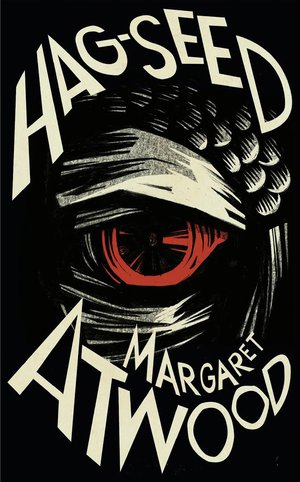Hag-Seed by Margaret Atwood
Review of Hag-Seed by Margaret Atwood
Review by Chloe Owen, MA Shakespeare Studies

Hag-Seed by Margaret Atwood
Margaret Atwood has chosen not to re-tell The Tempest, so much as to show one man’s engagement with the text in her contribution to the Hogarth Shakespeare series. Hag-Seed follows Felix, the Artistic Director of the Makeshiweg Theatre Festival, who is betrayed, fired, and who sends himself into exile outside of the town. There, his imagination conjures up the ghost of his deceased daughter, Miranda, who, in Felix’s mind, lives and grows in seclusion from the outside world.
Atwood offers an interesting new take on the Prospero-Miranda relationship. Miranda is no longer the young heroine discovering love, companionship, and a world outside of the childhood familial home. Instead, she is a projection of Felix’s imagination, a way for him to hold onto the daughter he lost. It is not only this set-up, but the self-awareness with which the character approaches it, that turns the situation from protective father to a touching portrayal of loss.
The shift in one of the play’s central relationships is arresting in itself, but Atwood’s Tempest really comes to life when Felix finds himself a new job teaching Shakespeare to inmates in a prison. After years as an outcast, Felix finally finds his way back into theatre as teacher and mentor to these men, and when he discovers that those who betrayed him will be visiting the prison, he sees his opportunity for revenge through staging The Tempest. This certainly has the potential to feel forced, and I admit I had my concerns about the direction of the novel, but Atwood keeps the actual production brief enough to avoid retelling the plot point-by-point. Yes, there is a restaging of the play and, yes, Atwood’s characters are doubled with Shakespeare’s, but this novel goes much further in its examination of The Tempest.
Hag-Seed is made for fans of Shakespeare’s play as it offers new, interesting, and not necessarily academic ways of looking at the text. Can we see Ariel, for example, not as a fairy at all, but as a stage manager, sound technician, and lighting expert? Could there be a familial relationship between Prospero and Caliban? Probably not, but it’s an interesting thought. And what does happen to Miranda once the play ends? Nothing, of course – there is no life outside of the play for her – but Atwood encourages an engagement with the text that goes beyond Shakespeare’s words.
A retelling of Shakespeare’s play could be very successful, and the other works in this collection testify to that, but Atwood’s take makes for an engaging read for Shakespeare fans. We get, not only mirrored characters, plotlines, and an update on a 400 year old text for 21st century readers, but an analysis of the play that lets the imagination run wild. Bound within the world of fiction, Atwood is free to make the most unorthodox suggestions and we are free to consider them, to play with the text, and to engage beyond an academic context.

